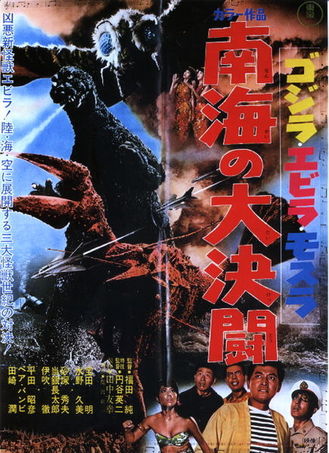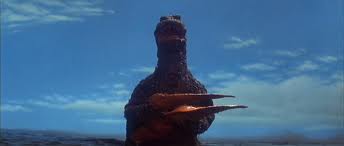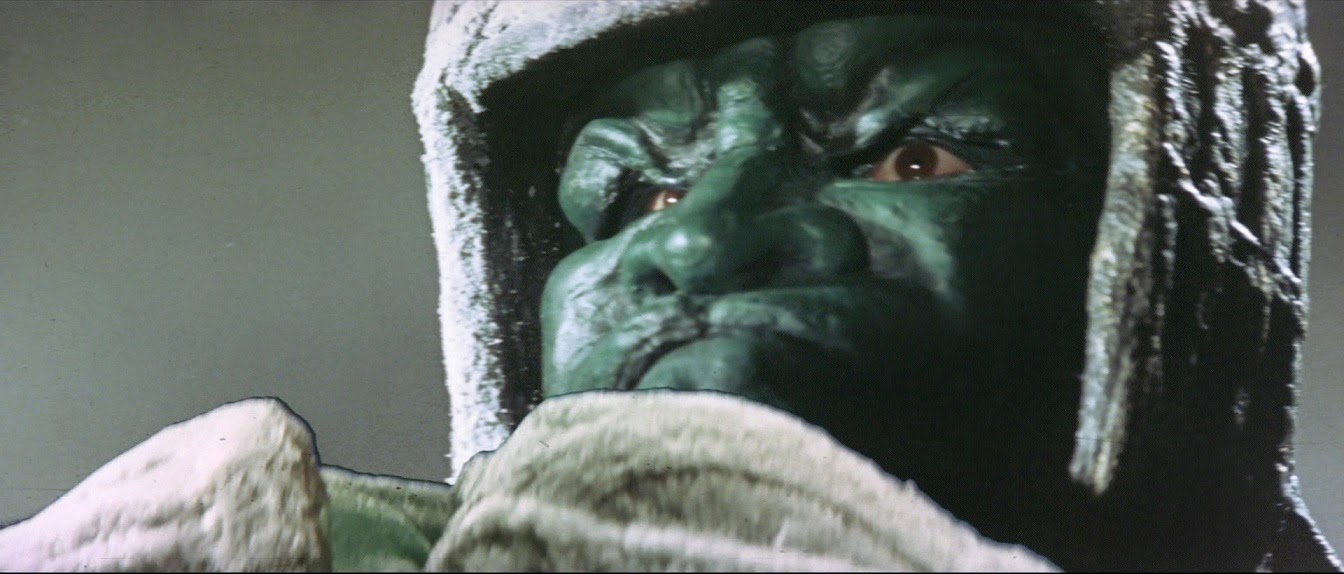- Home
- Features
- Movies/Media
- Collectibles
- Comics/Books
-
Databases
-
Figure Database
>
-
X-Plus Toho/Daiei/Other
>
- X-Plus 30 cm Godzilla/Toho Part One
- X-Plus 30 cm Godzilla/Toho Part Two
- X-Plus Large Monster Series Godzilla/Toho Part One
- X-Plus Large Monster Series Godzilla/Toho Part Two
- X-Plus Godzilla/Toho Pre-2007
- X-Plus Godzilla/Toho Gigantic Series
- X-Plus Daiei/Pacific Rim/Other
- X-Plus Daiei/Other Pre-2009
- X-Plus Toho/Daiei DefoReal/More Part One
- X-Plus Toho/Daiei DefoReal/More Part Two
- X-Plus Godzilla/Toho Other Figure Lines
- X-Plus Classic Creatures & More
- Star Ace/X-Plus Classic Creatures & More
-
X-Plus Ultraman
>
- X-Plus Ultraman Pre-2012 Part One
- X-Plus Ultraman Pre-2012 Part Two
- X-Plus Ultraman 2012 - 2013
- X-Plus Ultraman 2014 - 2015
- X-Plus Ultraman 2016 - 2017
- X-Plus Ultraman 2018 - 2019
- X-Plus Ultraman 2020 - 2021
- X-Plus Ultraman 2022 - 2023
- X-Plus Ultraman Gigantics/DefoReals
- X-Plus Ultraman RMC
- X-Plus Ultraman RMC Plus
- X-Plus Ultraman Other Figure Lines
- X-Plus Tokusatsu
- Bandai/Tamashii >
- Banpresto
- NECA >
- Medicom Toys >
- Kaiyodo/Revoltech
- Diamond Select Toys
- Funko/Jakks/Others
- Playmates Toys
- Art Spirits
- Mezco Toyz
-
X-Plus Toho/Daiei/Other
>
- Movie Database >
- Comic/Book Database >
-
Figure Database
>
- Marketplace
- Kaiju Addicts
|
Wrath of Daimajin (大魔神 逆襲 Daimashin Gyakushû, lit. Daimajin's Counterattack) is a 1966 tokusatsu kaiju film produced by Daiei Film Co. Ltd. It is the third and last film in the Daimajin trilogy.
This proves that Daimajin only takes side with commoners and is made clear when he kills castle retainers who, though unaffiliated with the villains, are indifferent to the commoners' peril. Also noteworthy is that this final film in the trilogy very much parallels the Gamera series (also by Daiei) in which the titular monster forms a bond with young children.
Production
Original release date: 10 December 1966. Directed by Kazuo Mori. Produced by Masaichi Nagata Music by Akira Ifukube Special Effects by Yoshiyuki Kuroda Also known as Return of Daimajin (A.D. Vision (again, this was a mistake; they placed the second film's title on the third film)), Majin's Counterattack (literal English title), The Revenge of Majin (international English title), and Majin Strikes Again (informal English title that probably would have been used if American International Television had released it in the U.S.(which was never done)).
0 Comments
Ebirah, Horror of the Deep, (released in Japan as Godzilla, Ebirah, Mothra: Big Duel in the South Seas (ゴジラ・エビラ・モスラ 南海の大決闘 Gojira, Ebira, Mosura Nankai no Daikettō)) is a 1966 Japanese science fiction kaiju film produced by Toho. Directed by Jun Fukuda with special effects by Sadamasa Arikawa (supervised by Eiji Tsuburaya), the film starred Akira Takarada, Akihiko Hirata, and Eisei Amamoto. The 7th film in the Godzilla series, this was the first of two island themed adventure films starring Godzilla. The film was released straight to television in the United States in 1967 by the Walter Reade organization as Godzilla versus The Sea Monster.  Plot After Yata (Toru Ibuki) is lost at sea, his brother Ryota (Toru Watanabe) steals a yacht with his two friends and a bank robber, the crew runs afoul of the giant lobster Ebirah, and washes up on the shore of an island, where a terrorist organization manufactures heavy water for their purposes, as well as a chemical that keeps Ebirah at bay. The organization, known as the Red Bamboo, has enslaved natives from Infant Island to help them, but the natives hope to awaken Mothra to rescue them. In their efforts to avoid capture, Ryota and his friends, aided by a beautiful native girl, stumble across Godzilla sleeping within a cliffside cavern. The group devises a plan to defeat the Red Bamboo and escape from the island. In the process, they wake Godzilla using a lightning rod. Godzilla fights Ebirah, but the giant crustacean escapes. Godzilla is then attacked by a giant condor and a squadron of Red Bamboo fighter jets, but destroys them. The humans retrieve the missing Yata, free the enslaved natives and Godzilla begins to destroy the base. Godzilla smashes a tower that has a self-destruct button that makes the island unstable. Godzilla fights Ebirah and defeats it, ripping off both Ebirah's claws and causing it to retreat into the sea. The natives summon Mothra to save everyone, however, Godzilla challenges Mothra when she gets to the island. Mothra manages to push Godzilla away and carry the people off. Godzilla escapes the island just before it explodes. Cast
 Production The film was originally written for King Kong (the project was tentatively titled Operation Robinson Crusoe:King Kong vs Ebirah), but Toho switched Kong with another popular character at the time, Godzilla. This explains why Godzilla displays uncharacteristic behavior in the film, such as drawing strength from electricity, his curiosity to Kumi Mizuno's character, the usage of boulders to destroy the Red Bamboo Base, and his hostilities with Mothra (despite them now being allies). Toho would later use Kong for King Kong Escapes. The US television version and early video versions have a different opening to the film. The opening scenes of Ryota at the Maritime Safety Agency searching for news of his brother have been replaced with a scene supposedly showing Ebirah destroying Yata's boat. This sequence was created by editing a later scene in the movie. The current DVD version of the film restores the Japanese cut. In 1991, Godzilla vs. the Sea Monster was distributed under the Film Ventures International name. The company replaced the opening with a generic credit sequence, using footage from Son of Godzilla. This version was aired on Mystery Science Theater 3000. English Version In 1967, the film was released directly to television in North America by the Walter Reade Organization. It was the first Godzilla film to not receive North American theatrical distribution. As with Walter Reade Organizations' next Godzilla release, Son of Godzilla, this movie was dubbed by Titra Studios. There were several alterations made for this release: Captain Ryuui's name was changed to Yamoto. Ebirah and the Red Bamboo are never named. Deleted: The opening credits sequence. This version features only the title card, Godzilla versus The Sea Monster. Altered: 30 seconds of Ebirah's attack on the Yahlen were shifted to the beginning of the film, standing in for Yata's unseen shipwreck. Deleted: A scene where Ryota goes to the Maritime Safety office and sees a poster on the wall for a dance contest. Deleted: Yoshimura thinking up a plan with Nita and Ichino to turn the Yahlen around through cooperation with Ryota. Altered: The tracked in surf music from Akira Kurosawa's High and Low was removed during Godzilla's battle with the Red Bamboo airforce. Deleted: Several unneeded, pace halting scenes of the natives of Infant Island praying to Mothra during the third act were removed. The English version runs 83 minutes, four minutes shorter than the Japanese version. In 2005, Sony released the film on DVD. This was the first time the original Japanese version had been officially released on home video in the United States. The original American version, however, was replaced by Toho's international version, which is uncut. The dubbing in this version is often cited as inferior to the original Titra Studios dub.  Titles Godzilla, Ebirah, Mothra: Great Battle in the South Seas - Translated Japanese title. Ebirah, Horror of the Deep - Toho's official English title, and UK home video title. Godzilla versus The Sea Monster - Original U.S. dub title. The only English Godzilla title where "versus" is spelled out. Godzilla vs. The Sea Monster - U.S. DVD title. This is actually the Ebirah, Horror of the Deep dub with a new title card. Box Office In Japan, the film was released on December 17, 1966 and sold approximately 3,450,000 tickets. It was re-released on July 22, 1972 and sold approximately 760,000 tickets.  Home Media Releases Kraken Releasing - Blu-Ray Released: May 6, 2014 Picture: AVC-1080P (2.35:1) Sound: Japanese and English (DTS-HD Mono) Subtitles: English Extra: Original Japanese Theatrical Trailer Note: 86 Minutes MPAA Rating: PG for sci-fi monster violence and brief mild language Sony Pictures - DVD Released: February 8, 2005 Aspect Ratio: Anamorphic Widescreen (2.35:1) Sound: Japanese (2.0), English (2.0) Supplements: Trailers for Godzilla: Tokyo SOS, MirrorMask, Anacondas: The Hunt for the Blood Orchid, and Steamboy Region 1 Note: Contain's Toho's International Version MPAA Rating: PG for sci-fi monster violence Details (Original film)
|
Release Dates
November 2023
|
|
© 2011-2024 Kaiju Battle. All Rights Reserved.
|
Visit Our Social Media Sites
|
Proudly powered by Weebly
|
- Home
- Features
- Movies/Media
- Collectibles
- Comics/Books
-
Databases
-
Figure Database
>
-
X-Plus Toho/Daiei/Other
>
- X-Plus 30 cm Godzilla/Toho Part One
- X-Plus 30 cm Godzilla/Toho Part Two
- X-Plus Large Monster Series Godzilla/Toho Part One
- X-Plus Large Monster Series Godzilla/Toho Part Two
- X-Plus Godzilla/Toho Pre-2007
- X-Plus Godzilla/Toho Gigantic Series
- X-Plus Daiei/Pacific Rim/Other
- X-Plus Daiei/Other Pre-2009
- X-Plus Toho/Daiei DefoReal/More Part One
- X-Plus Toho/Daiei DefoReal/More Part Two
- X-Plus Godzilla/Toho Other Figure Lines
- X-Plus Classic Creatures & More
- Star Ace/X-Plus Classic Creatures & More
-
X-Plus Ultraman
>
- X-Plus Ultraman Pre-2012 Part One
- X-Plus Ultraman Pre-2012 Part Two
- X-Plus Ultraman 2012 - 2013
- X-Plus Ultraman 2014 - 2015
- X-Plus Ultraman 2016 - 2017
- X-Plus Ultraman 2018 - 2019
- X-Plus Ultraman 2020 - 2021
- X-Plus Ultraman 2022 - 2023
- X-Plus Ultraman Gigantics/DefoReals
- X-Plus Ultraman RMC
- X-Plus Ultraman RMC Plus
- X-Plus Ultraman Other Figure Lines
- X-Plus Tokusatsu
- Bandai/Tamashii >
- Banpresto
- NECA >
- Medicom Toys >
- Kaiyodo/Revoltech
- Diamond Select Toys
- Funko/Jakks/Others
- Playmates Toys
- Art Spirits
- Mezco Toyz
-
X-Plus Toho/Daiei/Other
>
- Movie Database >
- Comic/Book Database >
-
Figure Database
>
- Marketplace
- Kaiju Addicts









 RSS Feed
RSS Feed